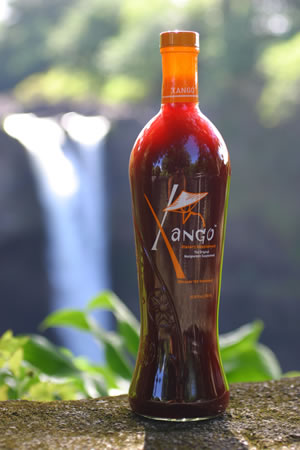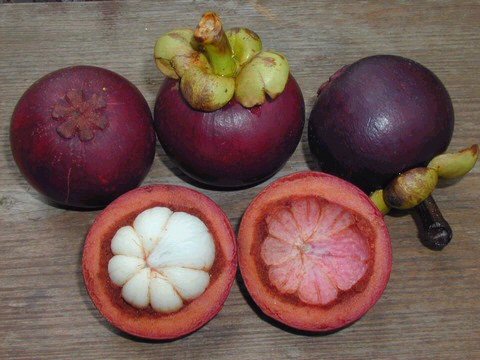
Original Xango Mangosteen Juice by XanGo - 25oz.
The brand name XanGo was created from two words: Xanthones and Mangosteen. And while this brand name represents the origin of the beverage, it will also come to represent much more to the people who enjoy it.
The first dietary supplement of its kind, with its distinctive, eye-catching logo, XanGo is readily identified as a true category creator.
Virtually unknown in the West, mangosteen has been used for thousands of years in Chinese, Ayurvedic, and folk medicine throughout Asia. Despite the fact that mangosteen has only recently been discovered in the West, there have already been literally hundreds of research papers and third party studies conducted on mangosteen and xanthones throughout the world, corroborating what folklore medicine has known for centuries: Mangosteen Works!
XanGo Juice boasts a proprietary whole~fruit formula, harnessing a concentrated rush of xanthones'a vigorous family of nextgeneration phytonutrients. Sounds complex. But here's the straight scoop. Research shows xanthones possess potent antioxidant properties that may help maintain intestinal health, strengthen the immune system, neutralize free radicals, help support cartilage and joint function, and promote a healthy seasonal respiratory system.
XanGo is a proprietary formulation featuring mangosteen whole fruit puree, utilizing all the xanthone-laden components of the fruit. The result is a heavenly delicious beverage that brings a wealth of incredible benefits.

One of the most praised of tropical fruits, and certainly the most esteemed fruit in the family Guttiferae, the mangosteen, Garcinia mangostana L., is almost universally known or heard of by this name. There are numerous variations in nomenclature: among Spanish-speaking people, it is called mangostan; to the French, it is mangostanier, mangoustanier, mangouste or mangostier; in Portuguese, it is mangostao, mangosta or mangusta; in Dutch, it is manggis or manggistan; in Vietnamese, mang cut; in Malaya, it may be referred to in any of these languages or by the local terms, mesetor, semetah, or sementah; in the Philippines, it is mangis or mangostan. Throughout the Malay Archipelago, there are many different spellings of names similar to most of the above.
The place of origin of the mangosteen is unknown but is believed to be the Sunda Islands and the Moluccas; still, there are wild trees in the forests of Kemaman, Malaya. Corner suggests that the tree may have been first domesticated in Thailand, or Burma. It is much cultivated in Thailand, where there were 9,700 acres (4,000 ha) in 1965,also in Kampuchea, southern Vietnam and Burma, throughout Malaya and Singapore. The tree was planted in Ceylon about 1800 and in India in 1881.

 | " Natural Cures They Don't Want You to Know About " ~ by Kevin Trudeau ~ CLICK HERE TO ORDER THIS INCREDIBLE BOOK ! (The Natural Cures Book As Seen on TV) |